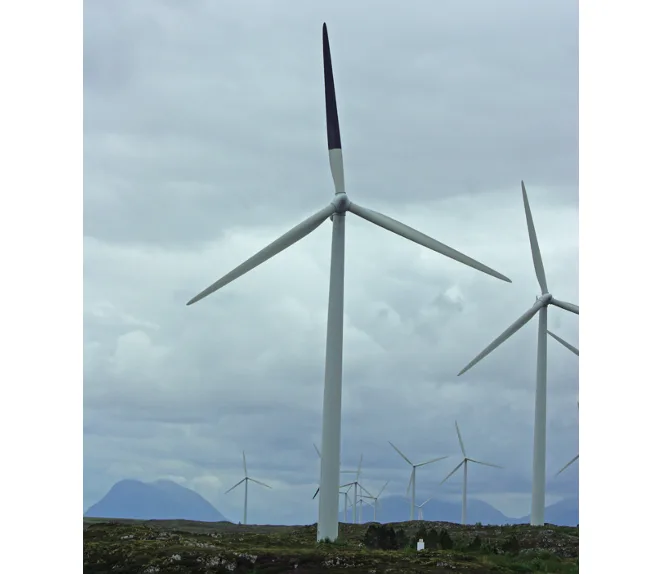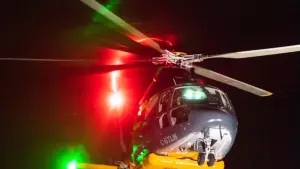
Painting wind turbine blades black can reduce bird deaths by 70%
A simple change to a wind turbine’s appearance reduced bird deaths at a study site in Norway.
The impact that wind turbines have on bird populations is a contentious aspect of this renewable energy source that causes thousands of avian fatalities each year. Researchers set out to find a way to better protect these species and report that their solution is surprisingly simple and highly effective.
A study recently published in Ecology and Evolution found that painting the blades on wind turbines black reduced annual bird fatality rates by over 70 per cent compared to neighbouring unpainted turbines.
Bird fatalities occur when they collide with the rotating arms, which happens because the spinning white blades appear as a “motion blur” that can be hard to detect. The researchers say that painting a single blade black could help the birds perceive the turbine’s rotation and allow the animal to recognize an object is in its path.
Certain types of birds responded differently to the black turbines. Raptors, which are especially susceptible to collisions with wind turbines, saw the highest decrease in the fatality rate. For example, after the blades had been painted there were no white-tailed eagle carcasses found at the study site in Norway.

Applying contrast colours to the rotor blades significantly reduced the collision risk for several species of birds. Credit: Roel May
The study states that the “global potential for wind-power generation is enormous” but while it's regarded by many “as the most promising renewable energy source,” innovative solutions need to be implemented to protect vulnerable birds.
Some wind farms have chosen to participate in selective shutdowns along bird migratory paths, which are identified using technology that monitors avian traffic, however, this results in disruption to energy generation and additional expenses and could compromise business.
While the black paint was effective at reducing bird deaths, the researchers described this solution as “demanding” because the paint had to be applied to pre-existing wind turbines during calm weather with a team that had rappelling experience. They say that this process would be less expensive and complicated if the paint is applied to the blades before the turbines are constructed.
LEADING CAUSES OF BIRD DEATHS
Bird fatalities due to wind turbines are often overrepresented while other causes are typically omitted from public discourse.
One of the most comprehensive studies on this topic was published in the journal Avian Conservation and Ecology by scientists from Environment Canada’s Wildlife Research Division in 2013. This study found that each year feral cats and domestic cats cause 79,600,000 and 54,880,000 bird deaths respectively, collisions into buildings or houses cause 16,390,000, road vehicle hits cause 9,814,000, and agriculture harms 135,400.
Wind energy collisions accounted for 13,060 bird deaths.
“Combined, cat predation and collisions with windows, vehicles, and transmission lines caused over 95 per cent of all mortality; the highest industrial causes of mortality were the electrical power and agriculture sectors,” the study states.
Even though bird fatalities by wind turbines are overstated, an increasing number of birds will collide with wind turbines without interventions to keep them safe.











